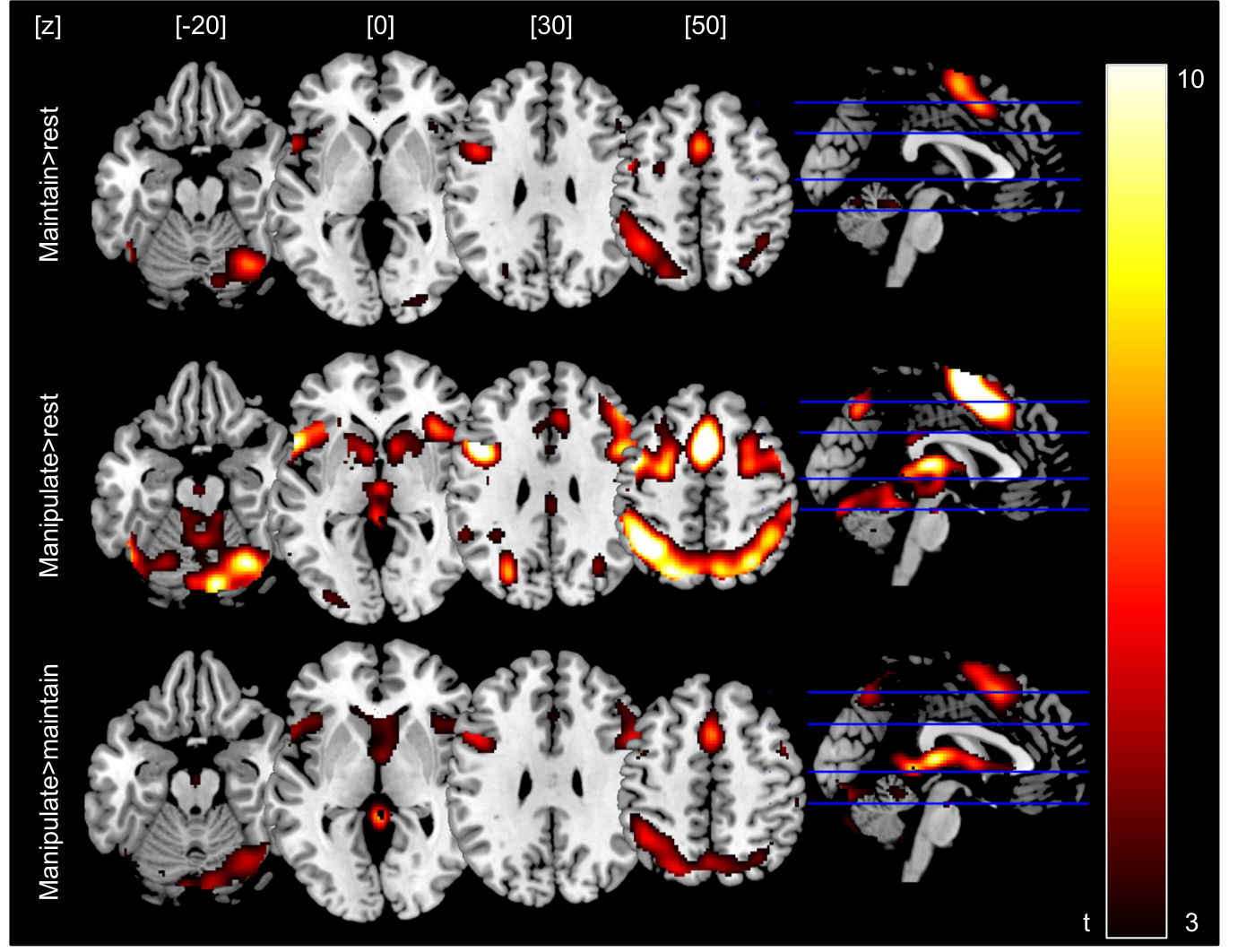Session Information
Date: Monday, October 8, 2018
Session Title: Parkinson's Disease: Cognition
Session Time: 1:15pm-2:45pm
Location: Hall 3FG
Objective: This study aimed to investigate the neural correlates of different working memory (WM) aspects in Parkinson’s disease (PD) patients using a newly designed WM paradigm and fMRI. Further, we will evaluate the change of these correlates as a function of a computerized 5-week WM training.
Background: WM describes a cognitive resource of limited capacity, which enables us to temporarily maintain and manipulate relevant information. Impairments of WM and especially its executive aspects (i.e. manipulation within WM) are early cognitive symptoms in PD. Thus, maintaining high WM function is essential. Training of WM has been proven beneficial in non-PD populations, with positive effects also transferring to other cognitive abilities. Investigating the differential neural correlates of WM maintenance and manipulation in a PD cohort without cognitive impairment is scope of this study. Additionally, we are aiming to evaluate if WM training can also be beneficial for these patients and which effects such an intervention may have on a neural level.
Methods: 29 patients (13 female; mean age= 65y 10y) with idiopathic PD were recruited. All patients underwent an fMRI session on a 3T Philipps Ingenia while performing a newly designed WM paradigm. In order to disentangle pure WM storage from manipulation within WM, patients had to either memorize a sequence of letters or to memorize and reverse the letter order. After pre-processing, first and second level analyses were performed for contrasts of interest (maintain>rest, manipulate>rest and manipulate>maintain) using SPM12. Results were considered significant on cluster-level when p<.05 (FWE-corrected).
Results: Pure maintenance in WM (maintain>rest) activated regions typically involved in WM such as vlPFC, dlPFC, OFC, anterior insula, premotor cortex, angular gyrus and cerebellum1. Manipulating items within WM (manipulate>rest) required largely the same regions, however also relied on putamen and left parietal lobe2. This was even more apparent in the specific manipulate>maintain contrast, where a strong activation of the precuneus was observed (Fig.1).
Conclusions: Using this paradigm allowed us to successfully disentangle the differential regions involved in pure WM maintenance and WM manipulation. Subsequently, we will investigate whether WM training may change the underlying neural correlates uniformly or rather specific regions involved only in the executive aspects of WM.
References: 1.Owen, A. M., McMillan, K. M., Laird, A. R., & Bullmore, E. (2005). N‐back working memory paradigm: A meta‐analysis of normative functional neuroimaging studies. Human brain mapping, 25(1), 46-59. 2.Koenigs, M., Barbey, A. K., Postle, B. R., & Grafman, J. (2009). Superior parietal cortex is critical for the manipulation of information in working memory. Journal of Neuroscience, 29(47), 14980-14986.
To cite this abstract in AMA style:
K. Giehl, A. Ophey, J. Hammes, S. Rehberg, C. Eggers, T. Lichtenstein, D. Maintz, E. Kalbe, T. van Eimeren. Working memory maintenance and manipulation in Parkinson’s disease: An fMRI study [abstract]. Mov Disord. 2018; 33 (suppl 2). https://www.mdsabstracts.org/abstract/working-memory-maintenance-and-manipulation-in-parkinsons-disease-an-fmri-study/. Accessed January 2, 2026.« Back to 2018 International Congress
MDS Abstracts - https://www.mdsabstracts.org/abstract/working-memory-maintenance-and-manipulation-in-parkinsons-disease-an-fmri-study/

